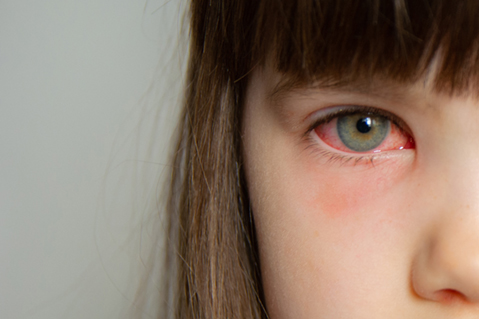
Conjunctivitis is commonly known as Pink Eye and it is a very common condition. The eye contains a very thin, film-like membrane which covers the white part of the eye as well as the inside of the eyelid. This membrane is called the conjunctiva and when it becomes inflamed or swollen it is diagnosed as conjunctivitis.
Types of Conjunctivitis
The conjunctiva is responsible for producing mucus which help keep the surface of the eye protected and moist. Pink eye occurs when the conjunctiva becomes swollen, irritated or infected. When this occurs, the blood vessels will enlarge and the eye can look very red. Often there will be discharge as well. Conjunctivitis can affect one or both eyes. There are three basic types of conjunctivitis:
- Bacterial
- Viral
- Allergic
Is Conjunctivitis Contagious?
Bacterial and viral conjunctivitis can both be contagious. However, allergic conjunctivitis is caused by an irritant or allergen and is not contagious. Conjunctivitis caused by a virus (more than that caused by bacteria) can be easily transmitted between individuals. The most common ways that conjunctivitis is transmitted include:
- Not washing your hands before touching your eyes
- Reusing towels or tissues to wipe the face and eyes
- Not keeping contact lenses cleaned
- Using eye makeup which is infected or has been in contact with the virus or bacteria
Children are more susceptible to getting conjunctivitis because they come into close contact with numerous people at school or day care every day.
Symptoms of Conjunctivitis
The different types of conjunctivitis can display different symptoms although often the symptoms are similar. If bacteria causes pink eye, the eye will usually turn very red. The eyelids may develop a crust on them which causes them to stick together. Typically, bacterial conjunctivitis is characterized by a mucous-like or pus-like discharge and also spread to both of the eyes.
Conjunctivitis caused by a virus may cause the eye to turn very red, and become crusty and swollen. The discharge tends to be more watery and less mucous or “purulent.” However, the discharge may also contain strings of mucus. In most cases, viral conjunctivitis will affect only one eye initially and then can spread to the other one after a few days.
Allergic reactions which cause pink eye will look a lot like viral conjunctivitis. The eyes may be red and watery, or teary. But is these instances, the eyes may also become itchy. Most people will also experience an itchy, stuffy or runny nose too and may suffer from seasonal allergies.
Treatment Options for Conjunctivitis
The treatment of conjunctivitis depends on the etiology of the conjunctivitis. When pink eye is caused by a virus, symptoms will usually go away on their own after one or two weeks. Cool compresses and artificial tears can be used to bring relief. If the case becomes severe, an ophthalmologist may prescribe anti-inflammatory drops. It is important to know that antibiotic eye drops are not helpful in cases of viral conjunctivitis and do not speed resolution or improve the symptoms of viral conjunctivitis.
When pink eye is caused by bacteria the doctor will usually prescribe antibiotic eye drops. These drops can help speed the resolution of the conjunctivitis by helping the body kill off the bacteria.
Finally, if pink eye is caused by an allergic reaction, cool compresses, antihistamine eye drops or artificial tears may be used for treating the condition and bringing some relief. Sometimes steroid eye drops may be used if severe. This can be combined with oral antihistamines or anti-inflammatory medications used to treat systemic symptoms of allergies, including a runny nose or sneezing.
Preventing Conjunctivitis
There are several ways that an individual can help prevent the spread of conjunctivitis. Here are a few tips:
- Wash hands frequently
- Do not touch eyes with your hands
- Do not reuse towels, tissues, washcloths, or handkerchiefs to wash your face
- Change pillowcases often
- Do not share eye makeup and replace it frequently
- Properly clean contact lenses and dispose of them as directed. Sleeping in contact lenses overnight may increase your risk of infection.
